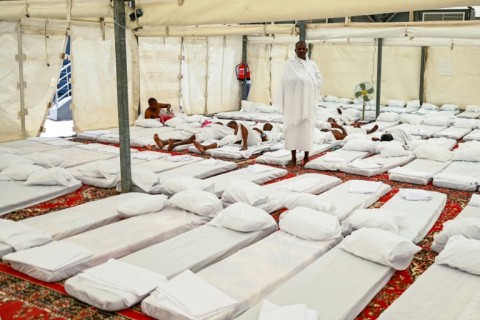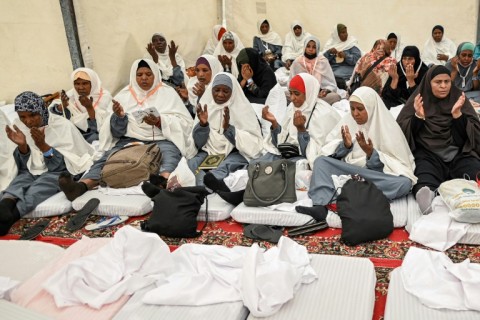
MINA - Hundreds of thousands of Muslim pilgrims walked or rode buses Monday to a giant tented city near Mecca for the climax of the annual hajj that Saudi officials say could break attendance records.
After performing the ritual circumambulation of the Kaaba, the giant black cube at Mecca's Grand Mosque that Muslims pray towards each day, worshippers set off for Mina, about seven kilometres (more than four miles) away, in suffocating heat.
Pilgrims in robes and sandals, many carrying umbrellas against the beating sun, undertook the journey on foot or crowded onto hundreds of air-conditioned buses provided by Saudi authorities.
They will spend the night in white tents in Mina, which every year hosts the world's largest encampment, before the hajj's high point on Tuesday: prayers at Mount Arafat, where the Prophet Mohammed is said to have delivered his final sermon.
"It is an experience that is worth it," said Salim Ibrahim, a 39-year-old Nigerian, when asked about temperatures that have touched 46 degrees Celsius (115 degrees Fahrenheit).
"Even if the heat gets stronger, I will repeat the hajj again," he added.
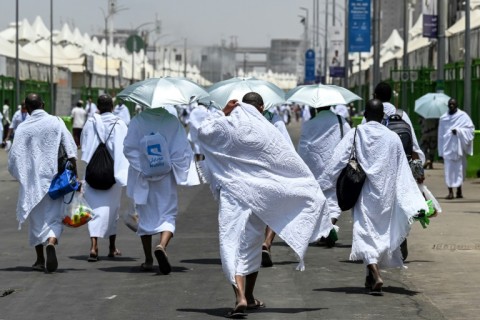
Saudi officials say this year's hajj -- one of the five pillars of Islam -- could be the biggest in history. After 2.5 million attended in 2019, numbers were capped in 2020, 2021 and 2022 because of the Covid pandemic.
The event has seen multiple crises over the years, including militant attacks, deadly fires and a 2015 stampede that killed up to 2,300 people. There have been no major incidents since.
As part of the safety measures, helicopters and AI-equipped drones have been deployed to monitor the flow of traffic towards Mina, which sits in a narrow valley flanked by rocky mountains.
A small fleet of self-driving buses, seating up to 11 people, is in operation between the sites of the rituals, including Mecca -- Islam's holiest city -- Mina and Muzdalifah.
- 'Exhausted' -
One of the biggest risks this year at the hajj, which follows the lunar calendar, is heat, especially after maximum age restrictions were removed.
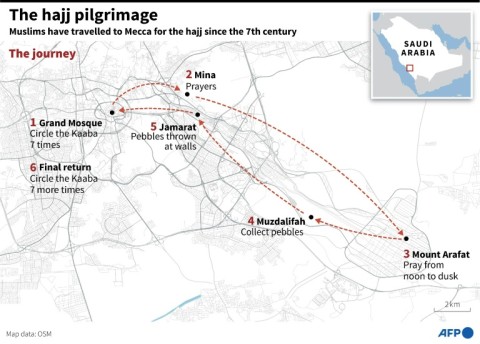
Habbia Abdel Nasser, a Moroccan woman who was performing the rituals with her husband, needed urgent medical treatment near the Grand Mosque because of the heat.
"The weather is very hot here compared to Morocco, and we feel exhausted," said her husband, 62-year-old businessman Rahim Abdel Nasser, as he poured water on her head to cool her down.
The health ministry has recommended pilgrims use umbrellas during the day and has told the sick and elderly to stay indoors around midday to "avoid sunstroke".
Four hospitals and 26 clinics are ready to deal with ailing pilgrims in Mina, and more than 190 ambulances have been deployed, officials said.
On Tuesday, the pilgrims will pray and recite the Koran for several hours at Mount Arafat and spend the night nearby. The following day, they will gather pebbles and hurl them at three giant concrete walls for the symbolic "stoning of the devil" ritual.
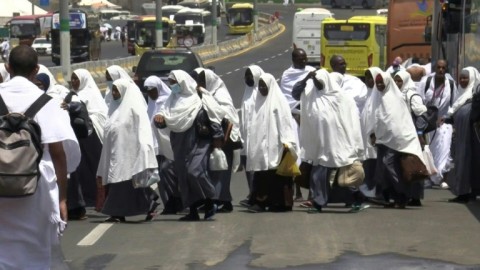
The last stop is back in Mecca, where they will perform a final circumambulation of the Kaaba, which according to Muslim tradition had been built by Abraham and his son, Ishmael.
All Muslims who are capable are expected to form the hajj at least once. About 1.6 million foreigners had arrived for the pilgrimage by Friday evening, officials said.
Many are overcome by the experience as they fulfil a lifelong dream at the sites where Islam began.
"I still can't believe I'm performing the hajj pilgrimage," Syrian merchant Mohammad Hajouj, 59, told AFP as he fought back tears.
ht/ho/th/ami
